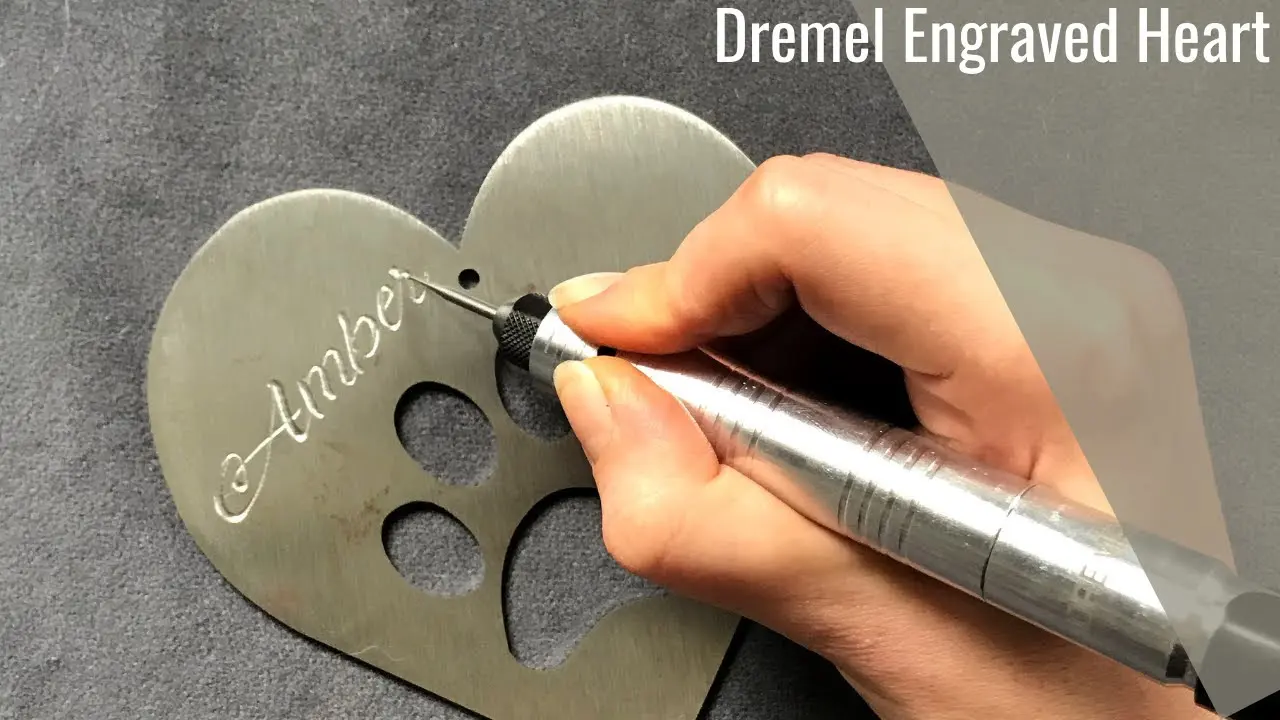For a long time, it seems that everyone has been focusing on metal and wood for carving, so there has been a steady progression of artwork about metal and wood carving towards the front. Even now, with the advancement of technology, people are turning their attention to challenging materials such as plastic. However, most of these challenging materials require very sophisticated instruments that are difficult for the average person to access. So, today we will introduce some carving methods that can be accomplished with only simple tools.
Metal engraving is very common in our daily lives. The aviation industry and medical industry will see metal engraving.
Introduction to tools for metal engraving
Most of the tools used for metal engraving nowadays are pneumatic engraving machines. Pneumatic engraving machines have a lot of advantages, including affordability and ease of operation. Moreover, most of the machines are equipped with many different engraving heads that are designed to meet the different needs of the users. Of course, in addition to pneumatic engraver, there are many manual alternative tools. For example, the original hammer and chisel, a combination that is cheap but also slow to carve. Then there’s the craft knife, a tool that’s even harder to control, and the craft knife can’t carve some of the harder metals and is very limited in its use.
Step-by-step introduction to metal engraving
Step 1:Choose a metal
Before you start your formal carving, you’d better take some discarded metal for practice. Of course, this metal should be less hard. For beginners, copper or brass alloys are considered good choices.
Step 2:Cleaning
Before engraving the metal, you’d better check over the metal you’re engraving to see if there are any stains on it. However, just to be on the safe side, you’d better take a damp cloth and wipe the metal once, and then take a dry cloth to dry the moisture. If you still find some other stains, this is the time for you to clean the metal again with soapy water. By the way, if the surface of the metal that you are preparing has a coating on it and you don’t have a way to remove this coating. Then you can choose to coat the surface of the metal with a decorative finish after the engraving is done.
Step 3: Carve the base pattern
By this time you have a suitable piece of metal, you need to conceptualize what pattern you want to carve. Even the top masters don’t have a way to do it all at once! Take out a pencil, or a small carving knife, and draw the pattern you want to carve on the metal. Here I suggest you’d better start with some simpler patterns first. By the way, if you need to carve some letters, you’d better use a ruler to draw two lines, and then clutch the letters you want to write between these two lines. The purpose of doing so is to prevent you from writing the letters crookedly in the process.
Another exception here is if you still want to carve a more complex pattern. You can do this as follows.
Apply a layer of varnish to the surface of the metal you want to engrave and wait for some time for the metal to take on some adhesion. Draw the pattern you want to engrave with a pencil onto a piece of mylar (or similar material). Place a piece of tape on the polyester film where you have just drawn the pattern. Note that the tape must be large enough to cover the pattern all at once. Then, gently scrape the tape with your fingernail or a ruler, just enough to make sure that you can get the pattern onto the tape. Finally, gently peel off the tape and apply it to the metal you’ve just treated. Here again, you need to use your fingernail or some other tool to scrape the tape so that the pattern can be imprinted on the metal.
Step 4 : Fix the metal
After you have completed the series of steps mentioned above, do you think you can start the formal engraving? No, you still need to fix the metal you need to engrave. This step sounds simple, but there is quite a bit to learn. Here you can choose between a vise or a clamp to hold the metal in place. You may ask why you need to hold the metal in place. Can’t I just hold the metal in my hand and carve? Of course, you can, but it’s a dangerous thing to do for a beginner because you’re likely to think your hand is slipping and let the engraving tool hurt you. Moreover, if you are using some mechanical tools, the presence of a jig is even more necessary. After all, the rate of engraving tools is still quite fast. If you hurt your hand, the consequences are unimaginable.
You’ll be ready for formal engraving. However, if you’re still not sure if you can pull it off, I suggest you find a few more videos on metal engraving for beginners and watch them. It will give you more and more detailed steps in there. Here are some tips. Before you just start engraving you can keep the engraving knife at the same angle all the time and practice a few more times (here of course we are referring to the operation on the metal we used to practice with as we mentioned earlier). In the beginning, you can try to carve straight lines. When you subsequently feel that you have improved your ability, you can carve some more complex lines. For example, wavy lines, lines of different thicknesses, etc.
If you want to know more about it
If you feel that this article is not detailed enough, or if you want to learn more about metal engraving. I can provide you with several channels to get information. You can search for engraving-related forums, and you can also find some books about engraving. Finally, if you have the condition, you can find some local engraving masters to learn some more specialized courses. I’m sure you’ll get something out of it. For more info please visit the networkustad.






